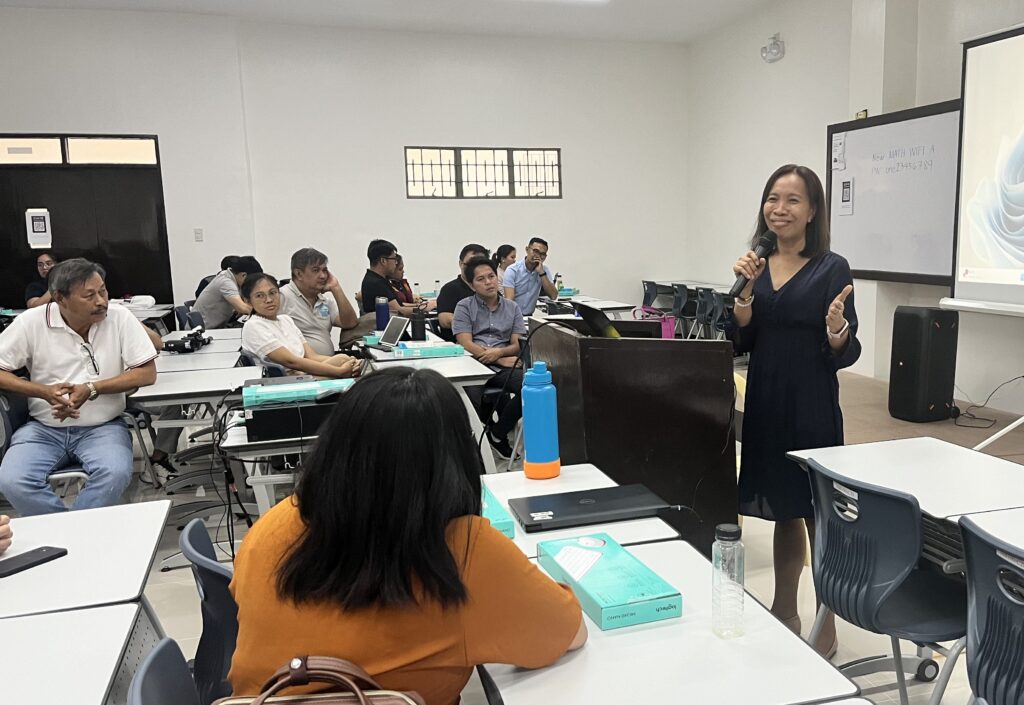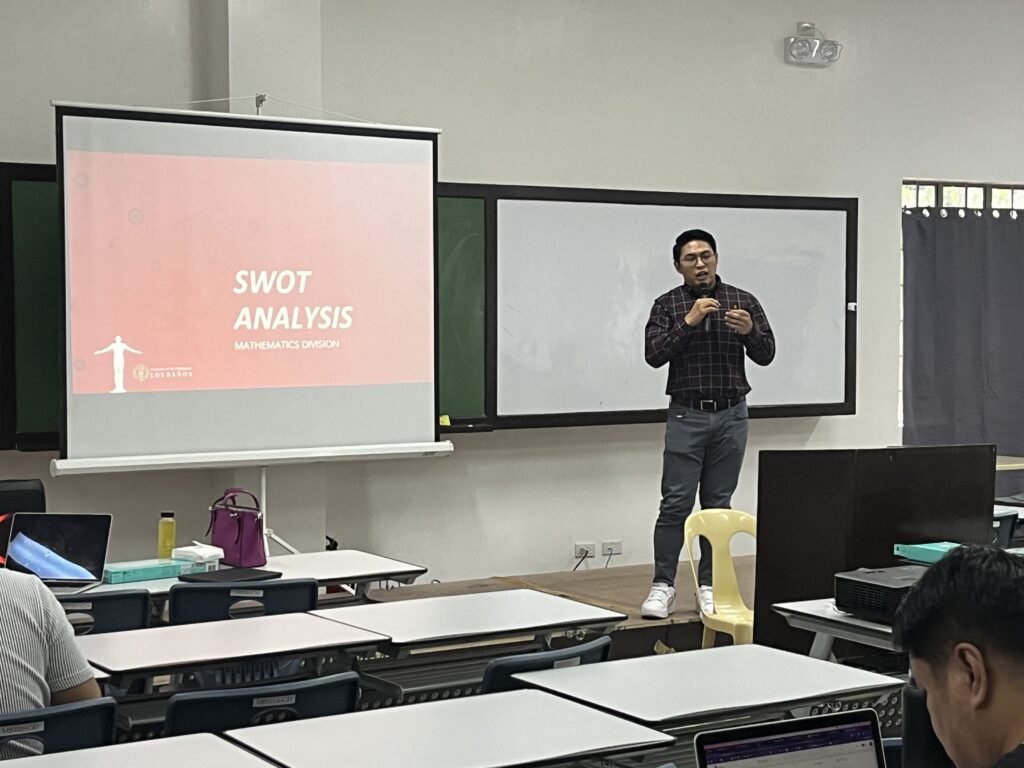
With the aim of taking advantage of the deep connection between mathematics and physics in the research endeavors of the institute, the Institute of Mathematical Sciences and Physics (IMSP) conducted the 2024 IMSP Annual Research Meeting on May 13 at the Mathematics Building, University of the Philippines Los Banos.
As the theme “Showcasing the Interplay of Mathematics and Physics as a Lens for Future Research Landscapes” suggests, this one-day event aims to serve as a venue for collaborations, evaluate IMSP research activities, and strategize for the future direction of research activities at the institute.
Headed by the IMSP director, Dr. Editha Jose, she emphasized the importance of doing collaborative research among faculty members. “This research meeting is necessary for the future of the two institutes as we navigate a more complex and quickly-changing world in terms of novelty of ideas and innovation,” Dr. Jose said.
Meanwhile, Vice Chancellor for Research and Extension, Prof. Nathaniel C. Bantayan, encouraged the faculty members to engage in discussions about the importance of research in the university and the country and strive for higher acceptability of research outputs in peer-reviewed journals. “This is the decade of collaboration,” Prof. Bantayan added.
Three plenary talks, parallel sessions on ongoing research by IMSP faculty members, a refresher on project management, SWOT analysis, and a roadmap workshop for IMSP research clusters were among the activities during the ARM.
Dr. Ranzivelle Marianne Roxas-Villanueva talked about Machine Learning in Physics and Mathematics: Trends and Opportunities; Dr. Neil Jerome A. Egarguin discussed Harmonizing Waves: Mathematical Control of Electromagnetic Waves; and Dr. Rea Divina C. Mero focused on Integrating the Gender and Development (GAD) Framework Relevant to IMSP’s Research.
After the plenary talks, some IMSP faculty members presented their ongoing research during a parallel session. A complete list of the invited presentations is listed below. The abstracts of these research talks can be found here. Furthermore, Mr. John Paulo S. Quitoriano from the office of the vice chancellor for research and extension provided a refresher on project management and an overview of university-sponsored research grants for basic research such as those conducted at IMSP.
Towards the end of the ARM, the different research clusters at IMSP convened to conduct SWOT analysis and create a research road map for the upcoming years. A summary is provided as follows:.
STRENGTHS. identified strengths include a strong culture of mentorship among senior and junior faculty members and students. These knowledgeable mentors have advanced degrees in diverse fields and are regularly publishing their research outputs in reputable peer-reviewed journals. At present, there are available in-house facilities that can cater to the needs of both math and physics research. The research clusters of the institute have done collaborative research with government and private agencies.
WEAKNESSES. Existing weaknesses that are up for improvement include the limited collaboration and lack of synergy within research clusters, units, alumni, industry, and other SUCs. In addition, research clusters currently lack visibility and offer limited services to the public. This is also related to the weak partnership with other institutions and policy-making bodies and, hence, the limited research output. There is also a lack of maintenance and/or support systems for existing equipment and laboratory materials.
OPPORTUNITIES. The above-mentioned weaknesses can be translated into opportunities such as possible partnership with industry, alumni, and other institutions. Faculty members may work in interdisciplinary fields such as biology, chemistry, medical science, engineering, among others. It may open collaboration to have access to modern facilities such as advanced computers and software, and real-world data from industry partners. There is also a wide array of grant-giving opportunities that may fund current and emerging research at the institute. Additional research manpower is also available since several faculty members have returned from study leave to bring a diverse range of expertise.
THREATS. Some identified threats arise from the limited research funding and strict procurement policies for research equipment. In terms of physical facilities, there are currently no rooms available for the expansion of research laboratories. There is also a concern on the decrease in the number of possible mentors and/or possible dissolution of some clusters either due to faculty members leaving to pursue advanced degrees or resigning from the university.
OPPORTUNITIES. The above-mentioned weaknesses can be translated into opportunities such as possible partnerships with industry, alumni, and other institutions. Faculty members may work in interdisciplinary fields such as biology, chemistry, medical science, and engineering, among others. It may open collaboration to have access to modern facilities such as advanced computers and software and real-world data from industry partners. There is also a wide array of grant-giving opportunities that may fund current and emerging research at the institute. Additional research manpower is also available since several faculty members have returned from study leave to bring a diverse range of expertise.
THREATS. Some identified threats arise from the limited research funding and strict procurement policies for research equipment. In terms of physical facilities, there are currently no rooms available for the expansion of research laboratories. There is also a concern about the decrease in the number of possible mentors and/or the possible dissolution of some clusters, either due to faculty members leaving to pursue advanced degrees or resigning from the university.
Based on the key points identified in the SWOT analysis, the research clusters created a road map of their short-term and long-term plans for the upcoming years. In the next 1–5 years, the research clusters aim to explore more research topics and carry out research in these areas. They also plan to cater to more graduate students and produce PhD graduates. In 6–10 years, the research clusters will strive to establish collaborations with other research centers and encourage each faculty member to have regular publication output. In about a decade, the institute aims to establish multiple national research centers in both physics and mathematics. The institute also aims to cater to in-house postdoctoral positions and offer research assistant and research associate positions.
(MAF Julian and GM Aguilos)



